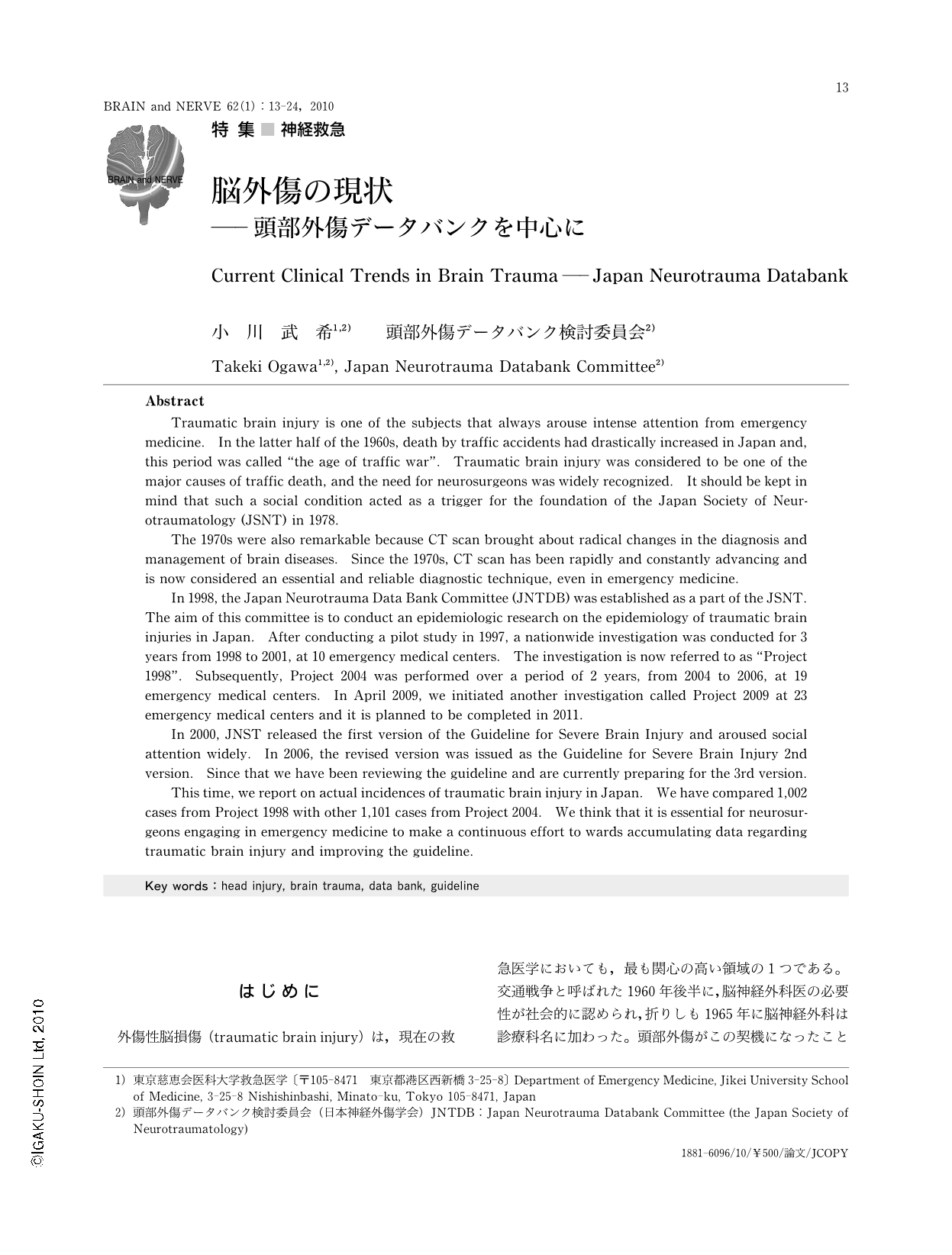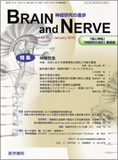Japanese
English
- 有料閲覧
- Abstract 文献概要
- 1ページ目 Look Inside
- 参考文献 Reference
はじめに
外傷性脳損傷(traumatic brain injury)は,現在の救急医学においても,最も関心の高い領域の1つである。交通戦争と呼ばれた1960年後半に,脳神経外科医の必要性が社会的に認められ,折りしも1965年に脳神経外科は診療科名に加わった。頭部外傷がこの契機になったことは,注視すべき点である。1975年にCTスキャンがわが国へ導入され,脳疾患領域の診療に革命的な変化をもたらした。その後もCTは,移動簡易型CTの開発や画像処理機能の向上など,画期的な飛躍を遂げ続けている。
日本脳神経外傷学会(Japan Society of Neurotraumatology:JSNT)は1978年に設立され,その中にわが国の頭部外傷に関する疫学的研究を目的とする「頭部外傷データバンク(Japan Neurotrauma Databank:JNTDB)検討委員会」が設立された。1997年のパイロットスタディのあと,1998年には4カ年の全国的な調査が行われた。これは,後に「プロジェクト1998」と命名された。2004年には2年間のプロジェクトが行われ,これは「プロジェクト2004」と命名された。現在,「プロジェクト2009」が進行中である。2000年にJSNTから重症頭部外傷治療・管理のガイドラインが発表され,社会的な関心事となった。第2版が2006年に上梓され,現在,第3版を作成中である。
本稿では,プロジェクト1998と2004の両プロジェクトに登録されたおよそ1,000例の比較を中心に脳外傷の現状を紹介する。
Abstract
Traumatic brain injury is one of the subjects that always arouse intense attention from emergency medicine. In the latter half of the 1960s, death by traffic accidents had drastically increased in Japan and, this period was called "the age of traffic war". Traumatic brain injury was considered to be one of the major causes of traffic death, and the need for neurosurgeons was widely recognized. It should be kept in mind that such a social condition acted as a trigger for the foundation of the Japan Society of Neurotraumatology (JSNT) in 1978.
The 1970s were also remarkable because CT scan brought about radical changes in the diagnosis and management of brain diseases. Since the 1970s, CT scan has been rapidly and constantly advancing and is now considered an essential and reliable diagnostic technique, even in emergency medicine.
In 1998, the Japan Neurotrauma Data Bank Committee (JNTDB) was established as a part of the JSNT. The aim of this committee is to conduct an epidemiologic research on the epidemiology of traumatic brain injuries in Japan. After conducting a pilot study in 1997, a nationwide investigation was conducted for 3 years from 1998 to 2001, at 10 emergency medical centers. The investigation is now referred to as "Project 1998". Subsequently, Project 2004 was performed over a period of 2 years, from 2004 to 2006, at 19 emergency medical centers. In April 2009, we initiated another investigation called Project 2009 at 23 emergency medical centers and it is planned to be completed in 2011.
In 2000, JNST released the first version of the Guideline for Severe Brain Injury and aroused social attention widely. In 2006, the revised version was issued as the Guideline for Severe Brain Injury 2nd version. Since that we have been reviewing the guideline and are currently preparing for the 3rd version.
This time,we report on actual incidences of traumatic brain injury in Japan. We have compared 1,002 cases from Project 1998 with other 1,101 cases from Project 2004. We think that it is essential for neurosurgeons engaging in emergency medicine to make a continuous effort to wards accumulating data regarding traumatic brain injury and improving the guideline.

Copyright © 2010, Igaku-Shoin Ltd. All rights reserved.


